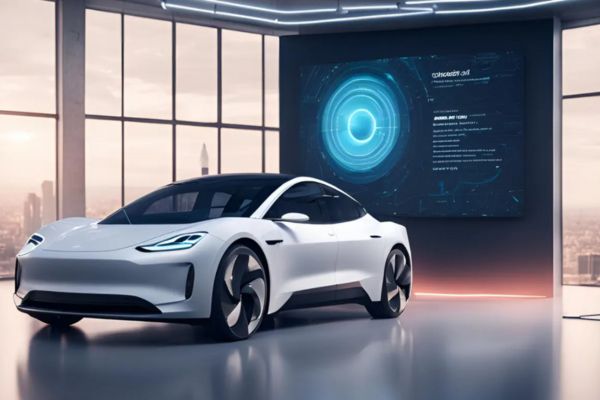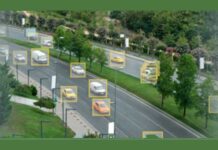As electric vehicles (EVs) rapidly gain traction worldwide, managing their energy efficiently has become a pivotal challenge and opportunity for urban planners, automotive manufacturers, and technology providers alike. Intelligent energy management—powered by Artificial Intelligence (AI)—is revolutionizing how EVs charge, navigate, and optimize their use of power on the road. This evolution promises not only to enhance user convenience and reduce operational costs but also to mitigate grid stress and accelerate the sustainable transportation revolution.
Lets explore the critical role AI plays in transforming EV charging infrastructure and route planning, highlighting innovations, benefits, challenges, and future directions.
The Growing Demand for Smarter EV Energy Management
The global EV market is booming, propelled by environmental concerns, government incentives, and advances in battery technology. However, the transition to electric mobility brings complex demands:
- Charging infrastructure needs: EVs require widespread, reliable, and fast charging stations to match the convenience of traditional refueling.
- Battery range constraints: Limited range and charging times raise “range anxiety,” potentially hindering consumer adoption.
- Grid impact: Large-scale EV charging can stress power grids, especially during peak hours.
- Route optimization: Efficient route planning is essential to balance energy use, time, and convenience.
To address these challenges, EV energy management must be dynamic, responsive, and data-driven—an ideal problem for AI solutions.
AI in EV Charging: Smarter, Faster, and Greener
1. Predictive Charging Scheduling
AI algorithms analyze historical usage patterns, traffic data, weather conditions, and individual driver habits to predict optimal charging times and locations. This predictive scheduling:
- Reduces waiting times by directing vehicles to the least congested charging stations.
- Allows charging providers to manage station loads and prevent grid overload.
- Helps drivers schedule charging during off-peak electricity tariff hours, lowering costs.
For example, companies like Tesla and ChargePoint use AI models that integrate vehicle data and grid status to recommend charging schedules personalized to users.
2. Dynamic Load Balancing and Smart Grid Integration
When multiple EVs charge simultaneously, especially fast-charging, the power demand surges. AI-powered energy management systems:
- Monitor real-time grid conditions.
- Adjust charging rates dynamically (smart charging) to prevent spikes.
- Prioritize charging based on urgency, battery level, and grid capacity.
- Integrate renewable energy sources (solar/wind) to supply cleaner power.
Smart charging reduces the risk of blackouts, optimizes renewable energy use, and lowers overall emissions.
3. Fault Detection and Maintenance
AI-driven analytics monitor charging station health, predict failures, and recommend proactive maintenance, ensuring higher uptime and reliability. This is critical for user trust and operational efficiency.
AI in Route Planning: Optimizing EV Travel
1. Range-Aware Navigation
Unlike traditional vehicles, EVs must consider battery levels and charging station availability in real-time. AI-based route planners incorporate:
- Current and forecasted battery status.
- Charging station locations, availability, and charging speeds.
- Traffic congestion and road conditions.
- Driver preferences (fastest route, scenic route, energy-efficient route).
Google Maps and specialized EV navigation apps like A Better Route Planner (ABRP) use AI algorithms to tailor routes minimizing charging stops while avoiding range anxiety.
2. Energy-Efficient Routing
AI optimizes driving routes to minimize energy consumption, taking into account:
- Terrain and elevation changes.
- Speed limits and traffic flow.
- Weather conditions (e.g., wind resistance, temperature effects on battery efficiency).
This enables longer travel distances and better battery management, extending vehicle lifespan.
3. Real-Time Adaptive Routing
Traffic jams, accidents, or unexpected road closures can waste energy and time. AI-powered systems update routes on the fly, suggesting alternate paths and charging stops to keep journeys smooth and efficient.
Benefits of AI-Driven Intelligent Energy Management
| Benefit | Description |
|---|---|
| Enhanced User Convenience | Reduced charging wait times, personalized schedules, stress-free routes |
| Grid Stability | Prevents peak overloads via smart charging and load balancing |
| Cost Savings | Optimizes charging times to leverage off-peak rates and renewables |
| Sustainability | Maximizes renewable energy usage and reduces carbon footprint |
| Vehicle Longevity | Efficient battery use extends EV life |
| Operational Efficiency | Proactive maintenance reduces downtime of charging infrastructure |
Challenges and Considerations
Despite its promise, AI integration in EV energy management faces hurdles:
- Data Privacy and Security: AI systems require extensive user and grid data, raising privacy concerns.
- Infrastructure Gaps: Uneven charging infrastructure availability limits AI’s ability to optimize fully.
- Interoperability: Diverse charging protocols and vehicle types require standardized data-sharing frameworks.
- Cost of Implementation: Upgrading infrastructure and deploying AI solutions can be capital intensive.
- User Adoption: Drivers need to trust AI recommendations for it to be effective.
Addressing these challenges requires collaboration across governments, industries, and technology providers.
Future Trends: Where is AI-Led EV Energy Management Headed?
- Vehicle-to-Grid (V2G) Integration: EVs as mobile energy storage that can feed power back to the grid during peak demand, managed by AI.
- Autonomous EV Fleets: Self-driving EVs dynamically routed and charged by AI to optimize fleet utilization.
- AI-Powered Battery Health Management: Continuous monitoring and adaptive charging to extend battery life further.
- Blockchain and AI for Energy Trading: Secure peer-to-peer energy trading among EV owners coordinated by AI.
- Global AI Ecosystems: Cross-border data and infrastructure integration for seamless EV travel.
Conclusion
Artificial Intelligence is the linchpin of intelligent energy management in the rapidly evolving electric vehicle landscape. By transforming charging infrastructure into adaptive, efficient systems and enabling smart route planning tailored to EV needs, AI is addressing core challenges that hinder mass adoption.
For consumers, this means stress-free, cost-effective, and environmentally friendly driving experiences. For providers and cities, it translates to optimized resource use, grid resilience, and sustainable urban mobility.
As AI algorithms continue to mature and infrastructure expands, the synergy between EVs and intelligent energy management promises a cleaner, smarter future for transportation worldwide.

















